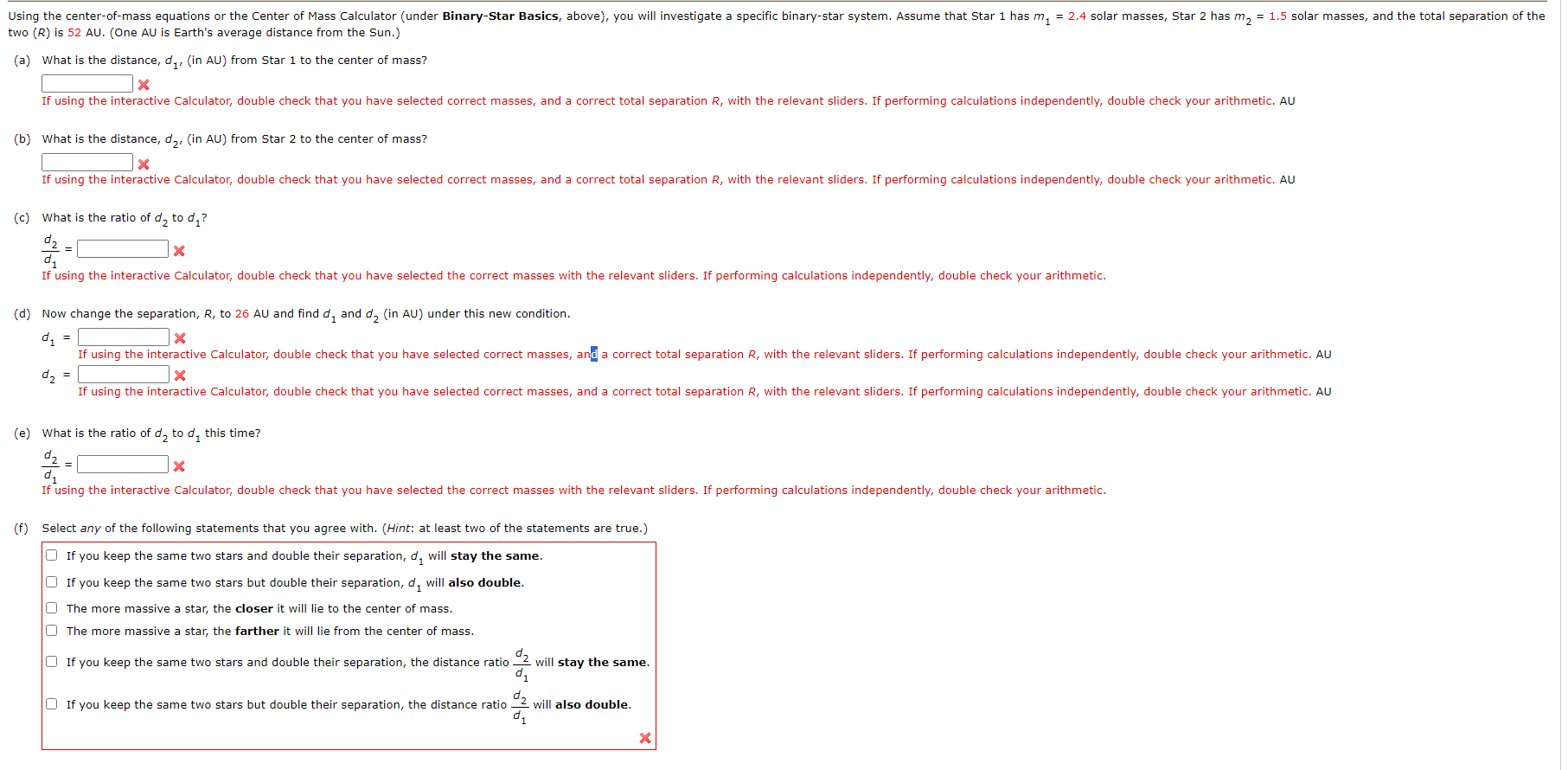Answered step by step
Verified Expert Solution
Question
1 Approved Answer
Using the center-of-mass equations or the Center of Mass Calculator (under Binary-Star Basics, above), you will investigate a specific binary-star system. Assume that Star

Using the center-of-mass equations or the Center of Mass Calculator (under Binary-Star Basics, above), you will investigate a specific binary-star system. Assume that Star 1 has m = 2.4 solar masses, Star 2 has m = 1.5 solar masses, and the total separation of the two (R) is 52 AU. (One AU is Earth's average distance from the Sun.) (a) What is the distance, d, (in AU) from Star 1 to the center of mass? If using the interactive Calculator, double check that you have selected correct masses, and a correct total separation R, with the relevant sliders. If performing calculations independently, double check your arithmetic. AU (b) What is the distance, d, (in AU) from Star 2 to the center of mass? X If using the interactive Calculator, double check that you have selected correct masses, and a correct total separation R, with the relevant sliders. If performing calculations independently, double check your arithmetic. AU (c) What is the ratio of d to d? X = d If using the interactive Calculator, double check that you have selected the correct masses with the relevant sliders. If performing calculations independently, double check your arithmetic. (d) Now change the separation, R, to 26 AU and find d, and d (in AU) under this new condition. d = x If using the interactive Calculator, double check that you have selected correct masses, and a correct total separation R, with the relevant sliders. If performing calculations independently, double check your arithmetic. AU d = X If using the interactive Calculator, double check that you have selected correct masses, and a correct total separation R, with the relevant sliders. If performing calculations independently, double check your arithmetic. AU (e) What is the ratio of d to do this time? d d X If using the interactive Calculator, double check that you have selected the correct masses with the relevant sliders. If performing calculations independently, double check your arithmetic. = (f) Select any of the following statements that you agree with. (Hint: at least two of the statements are true.) If you keep the same two stars and double their separation, d will stay the same. If you keep the same two stars but double their separation, d will also double. O The more massive a star, the closer it will lie to the center of mass. The more massive a star, the farther it will lie from the center of mass. If you keep the same two stars and double their separation, the distance ratio. will stay the same. d d d2 d If you keep the same two stars but double their separation, the distance ratio will also double. X
Step by Step Solution
★★★★★
3.39 Rating (146 Votes )
There are 3 Steps involved in it
Step: 1
The image shows a science homework assignment focusing on binarystar systems specifically concerning the distances of stars from the center of mass and how these distances change with varying paramete...
Get Instant Access to Expert-Tailored Solutions
See step-by-step solutions with expert insights and AI powered tools for academic success
Step: 2

Step: 3

Ace Your Homework with AI
Get the answers you need in no time with our AI-driven, step-by-step assistance
Get Started


